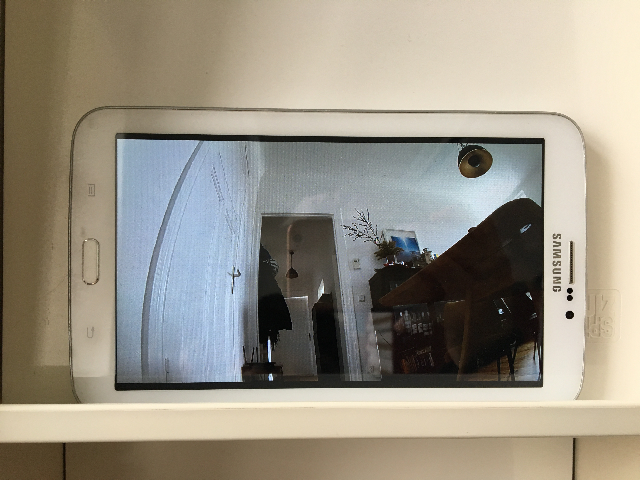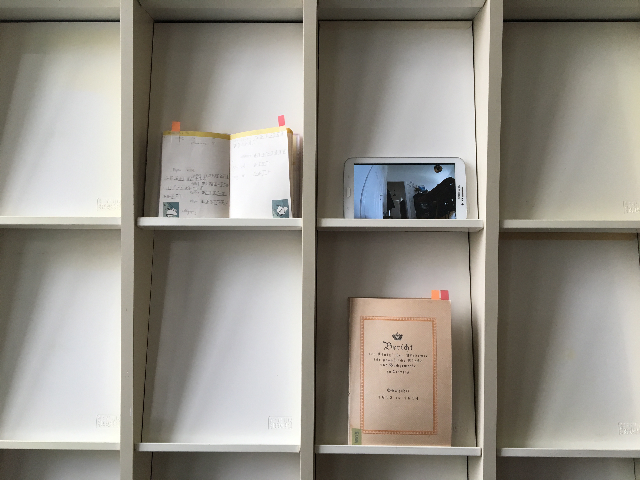Law Ho Man, Vivian
Sea Project / 2017-2020
The noblest pain
Water bottles, seawater from Hong Kong and Germany, Single channel digital video, parcel
6x6x23cm, 7 x 7 x 24 cm, Variable, 7’28 min, Color Sound Loop, 36 x 25 x 21cm
2017-19
‘Sea project’ is inspired by a wave of nostalgia for my homeland- Hong Kong since I moved to Berlin, Germany two years ago. Given the geographical location of Hong Kong, she is surrounded by deep waters. Berlin, on the contrary, is an inland city and a sea is lacking. Life in Germany has been wonderful for me – great experiences gained, inspirations gotten and changes in life encountered. However, a sea is missing in Berlin.
I posted some seawater from Mirs Bay, Hong Kong to Germany which was then poured into the Baltic Sea, Germany. At the same time, some seawater from the Baltic Sea was as well kept in a water bottle. The two bottles of the seawater from Germany and Hong Kong were put next to each other in the installation. The distance between the two seas is now minimal, the limitation of distance is eliminated.
The project also covers stories of the two seas. Years ago, the Chinese escaped from the Communist Party by swimming from Mainland to Mirs Bay, Hong Kong; while Baltic Sea was where east Germans escaping from the DDR would pass by while they swam from Rostock, Germany to Denmark. The similarity between the two seas is a destiny, connecting the two of them together.
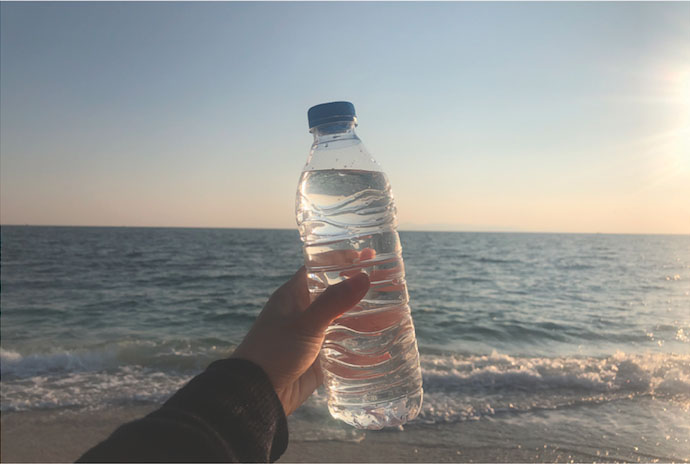
mare nostrum
Single Channel Digital Video
Color Sound Loop
5’17 min
2019
The second video of this project is ‘mare nostrum’, which means ‘our sea’ in Roman. During the Interview with Abdul Alnesser, a Sryian refugee who escaped to Germany through Aegean Sea. The whole escape route is around 3400 km. During the escape, he took a boat from Samos Island, Turkey to Greece and shared the terrify experience in the video. Just next to the Aegean Sea, according to UNHCR, more than 1,500 refugees died when they across the Mediterranean Sea in 2018, which makes the Mediterranean Sea and the surrounding seas the deadliest sea area in the world. Moreover, the Italian government prevents NGO to save refugees at the sea. This is a sad sea, which contains huge amount of dissolved human particle. In the video, I went to the Aegean Sea to collect the seawater. The laughter of the tourists around the beach simply states that this sea is served as a happy vacation place for tourists. However, the escape story from the refugee reminds us that this sea is a symbol of high risk of dying to them rather than a paradise. The picture of the beautiful sea makes a huge contrast with Abdul’s narration and strengthens the sadness of the sea.
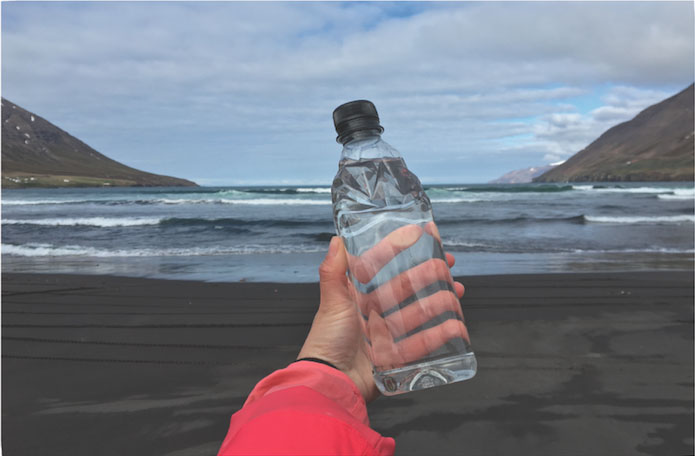
Burial at Sea
Single Channel Digital Video
Color Sound Loop
7’15 min
2020
This project is still ongoing. Every sea has different stories, but yet similar. This journey of seawater collection will allow me to rethink the connection between the ocean and myself and the relationship between nature and men.
Misfortune Cookies Menu / 2017
Mixed media installation
Single Channel Digital Video,
Misfortune Cookies, notes, sweet sour sauce, fork, noodle box,
Colour sound loop, Variable, 15×2 cm, 9x9x11 cm, 2’59
Subversiv / 2018
Time Travelling Project / 2017
Time travelling, A set of photo and documents
This project is documentation of my time journey to my mother’s childhood. I collect my mother’s childhood photo and documents. Moreover, I replace her face with my face in the photo and changing her name to my name in her documents by Photoshop. This faking of history creates a new identity
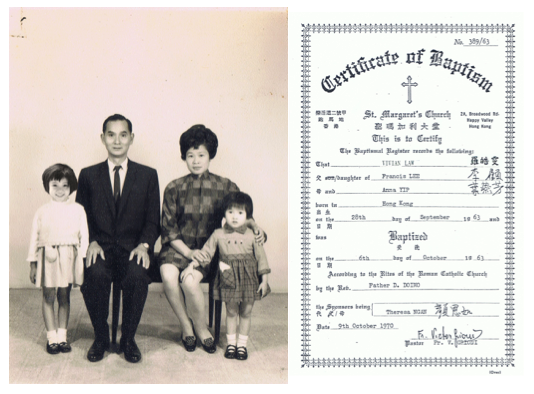
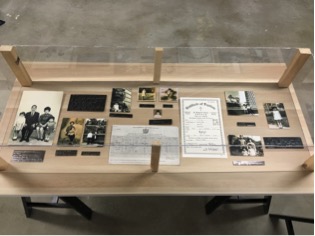
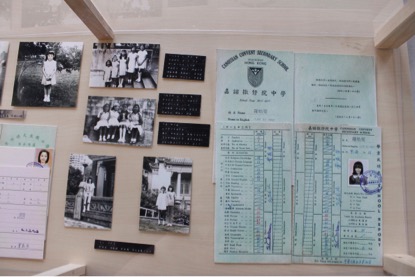
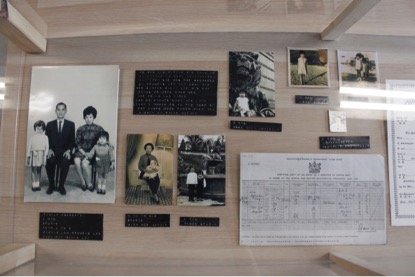
Identity Project / 2014
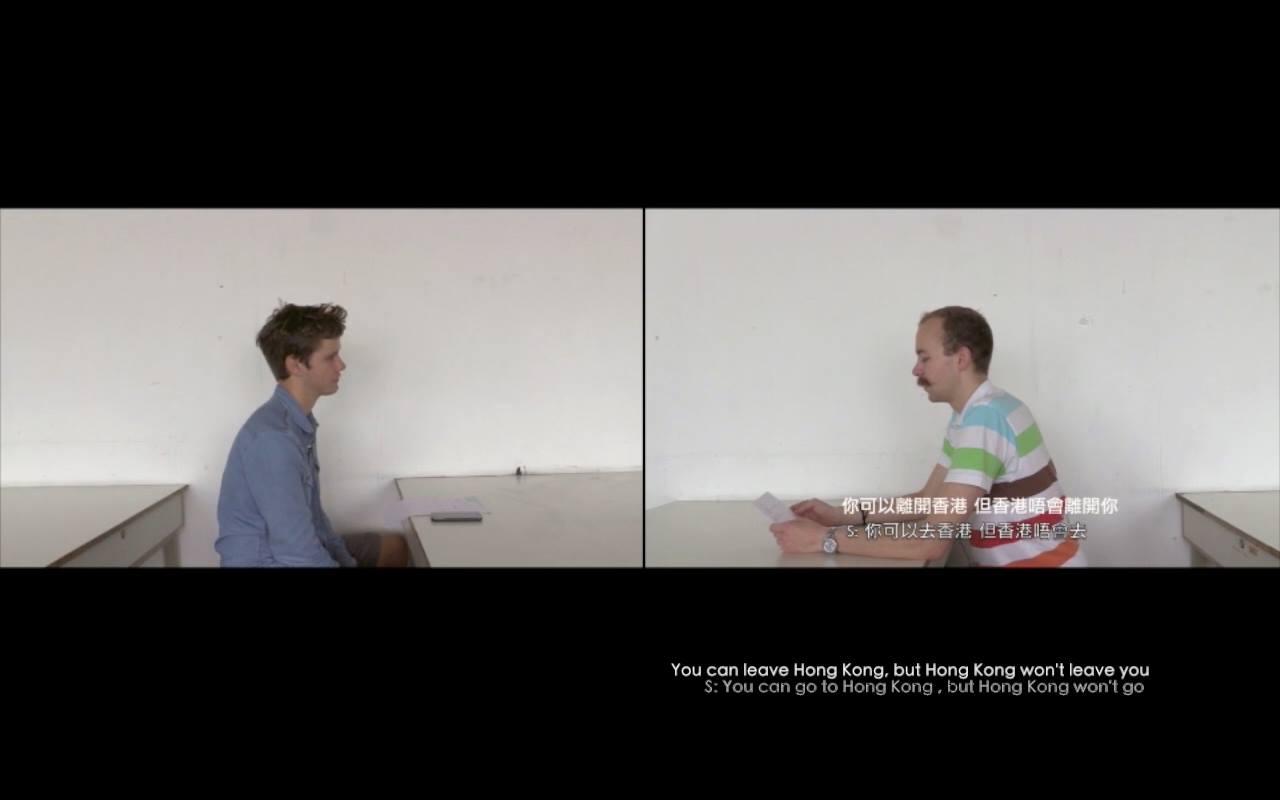
Q & A, Dual Channel Digital Video, Sound, Colour, loop, 6’27
Exhibited in ‘We don’t drink water’, The Art of CUHK Graduation Exhibition ‘Mobile Cinema @ City Visions Jena
My work heavily based on personal experience of confusion of self-identification. I work on video. I have taken the idea of being a Hongkonger as natural and for granted, but this idea has been shaken after a journey to the United States. I enjoy the days in foreign countries and am open to be acculturated and enculturated by a diversity of cultures. One unexpected side-effect brought by those encounters would be the estrangement of the idea of ‘self’, ‘ego’ or ‘self-identity’. If I stay in the U.S. for long enough and have the biological factors excluded, through learning their language and lifestyle with my cultural competence skill, maybe I can become an American. With the facilitated communication across cultures, the identity of ‘self’ categorized under nationalities and ethnicities has become a blurred concept. How can we devide between ‘myself’ and ‘themselves’? What is the dividing line that separates ‘ourselves’ and ‘themselves’? How do we develop our perception of ‘myself’?
If the identity of Hongkonger is not derived from our territory and border, languages or original nationalities, what are the carriers for self-identification?
I’ve experienced these struggles and thoughts repeatedly and I wish this series of work can serve as a discussion of ‘ego’, self-identity and self recognition as a Hongkonger.
‘Q and A’ is a question-and-answer section about identities. I invited expatriates to read out the Q and A lines in Cantonese, which is a dialect spoken by Hongkongers. The upper row of subtitle from every scene are extracted from movies that portray the idea of identity. The questions and answers involved in the video clip are unrelated but are both drawn from the movies related to identity recognition. They are juxtaposed in hopes to create the effect of identity confusion. Cantonese is designed to be used as the language the expatriates communicate in so as to emphasize the sense of deviation between ethnicities and languages, and to highlight different understandings of self-identity arising from appearance and ego.
In every scene, the lower row of subtitle is actually what was heard by Sandro, an Italian-HongKong biracial, when the upper row of subtitle is played to him. Born in Belgium but raised in Hong Kong, Sandro is not proficient in Cantonese. He, however, has a Hongkonger appearance. How shall him identify himself? A Hongkonger, Italian, Belgian, or others? What was heard by Sandro have a fairly great difference with the original meaning of the sentences. I hope to use this discrepancy to depict the representation and manifestation of the blurriness of self-identification. In addition to it, I hope to illustrate the importance of languages to the construction of self-identities through this piece of work.
Upon the creation of this series of work, I have discovered and realized profound implications on the idea of self, how self connects and interacts with conceptions of languages and ethnicities. This is by no means not the end. Our society should still strive to ask more questions and look into how art can convey these ideas.
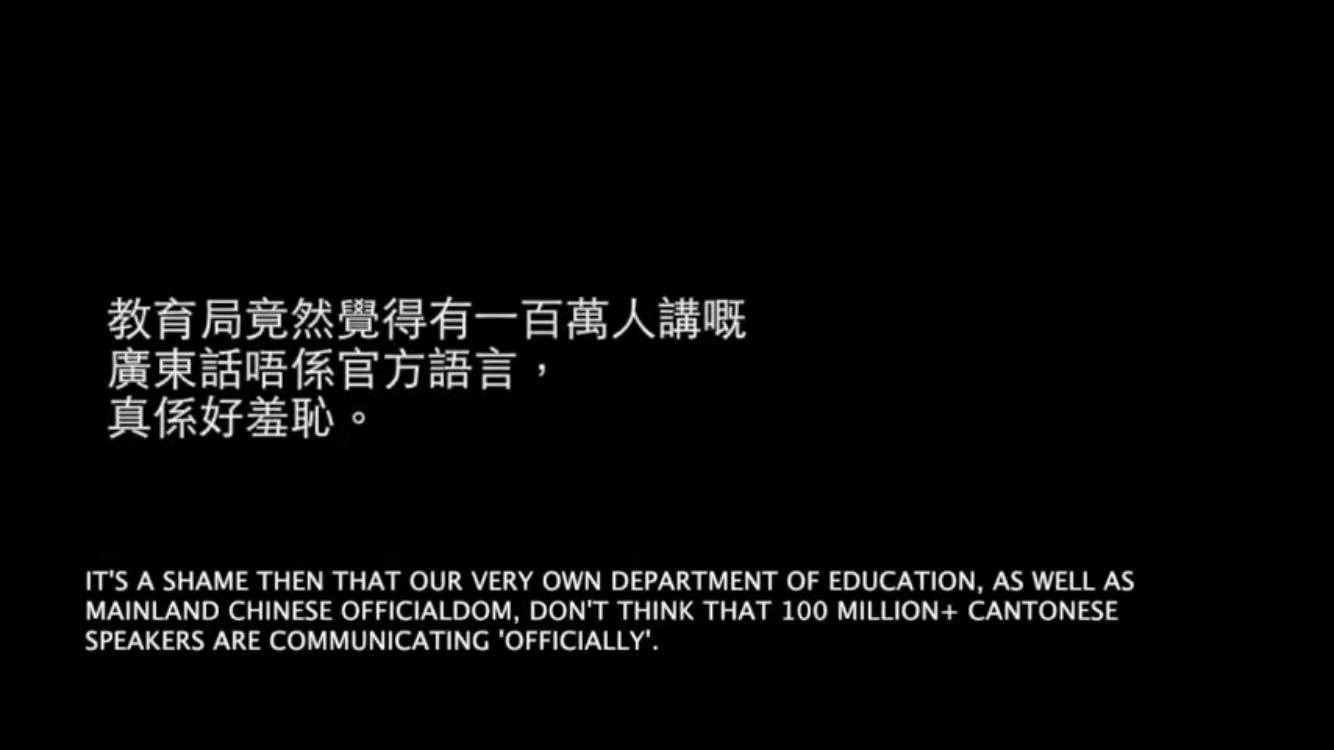
Identity, Digital Video, Sound, Colour, loop, 6’27
Exhibited in ‘/ˈpraktɪs/’, Lai Oi Ki and Law Ho Man Joint Exhibition
‘Identity’ showed that mother-tongue is only one of the many factors that can build our identity while languages distinguishes different ethnic groups. Self-identity should not be limited by language barriers, but may still conceptualise and identify the construct the idea of ‘self’.
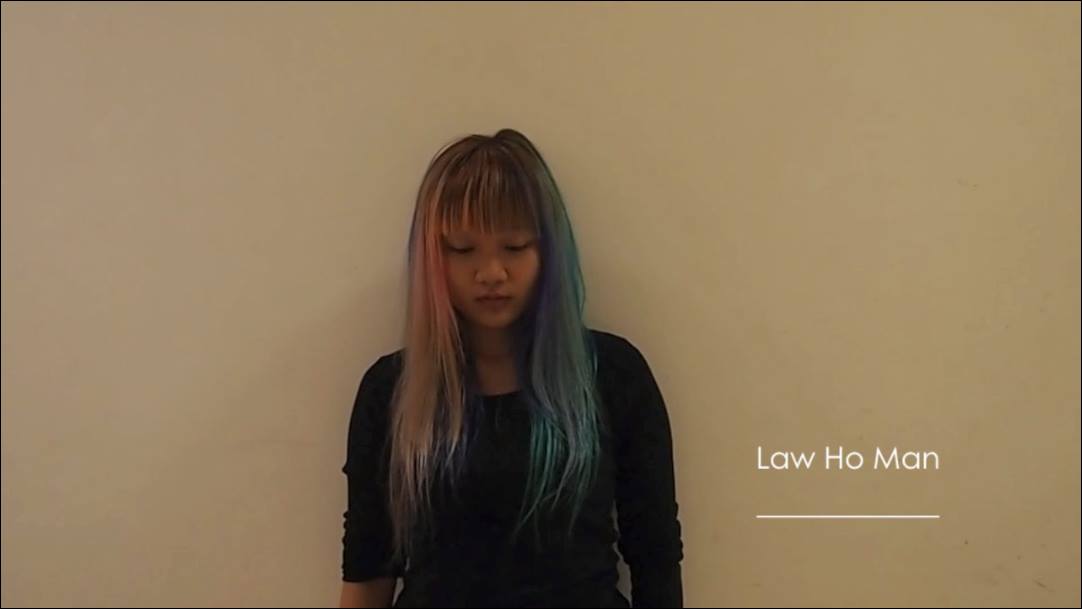
Anyone can be Anything, Digital Video, Sound, Colour, loop, 3’20
‘Anyone can be anything’ is a to highlight and question about self-identity, as well as to find out the realm and meaning of such idea. As the title of the work implies, Hongkongers may not necessarily be the only ones who are entitled to say ‘I am a Hongkonger’. At the same time, Hongkongers may not be the actual ‘Hongkongers’ as we perceive diresctly. The interviewees in my project, who are not ‘Hongkongers’, used to wear westernised outfit, have blonde hair and green iris. They however have had their hair dyed black and speaks Cantonese in the clip. What affects us in identifying ourselves? Is it self-consciousness, appearance and racial characteristics, or others? Is yellow complexion and black hair equivalent to ‘the descendants of the dragon’ (Chinese)?
Dye / 2014
Dye
Hair on paper, sound, 32×42 cm each, loop, a set of 2, 2014
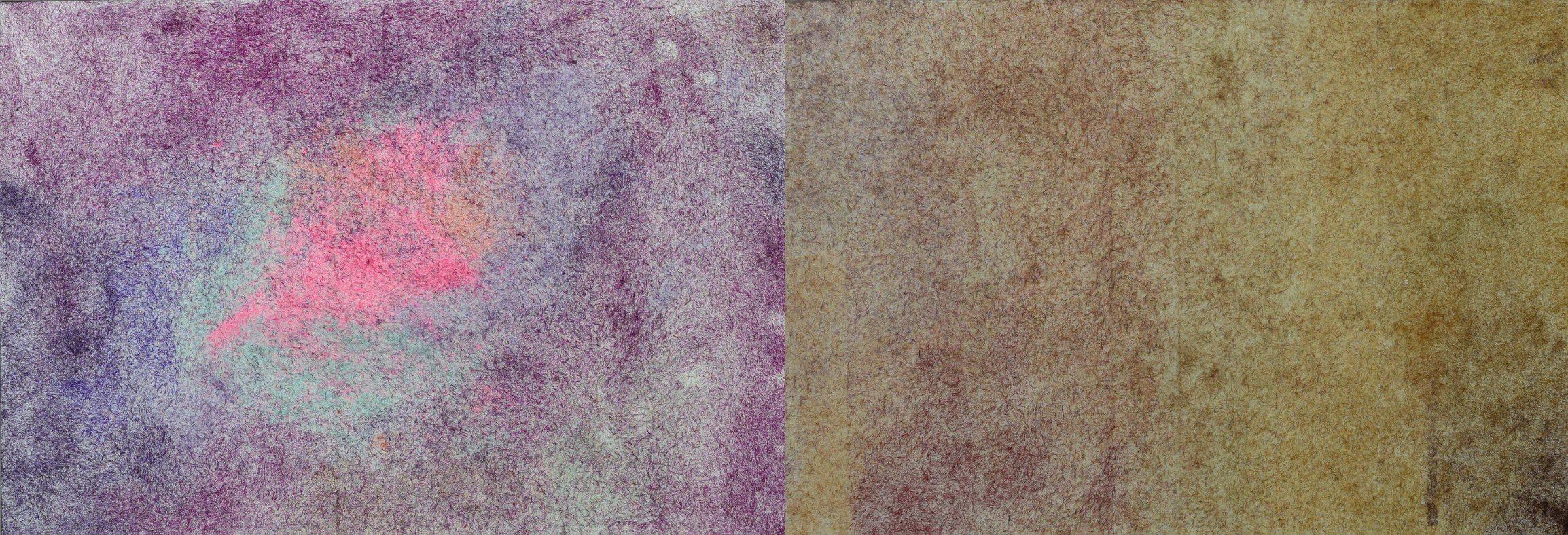
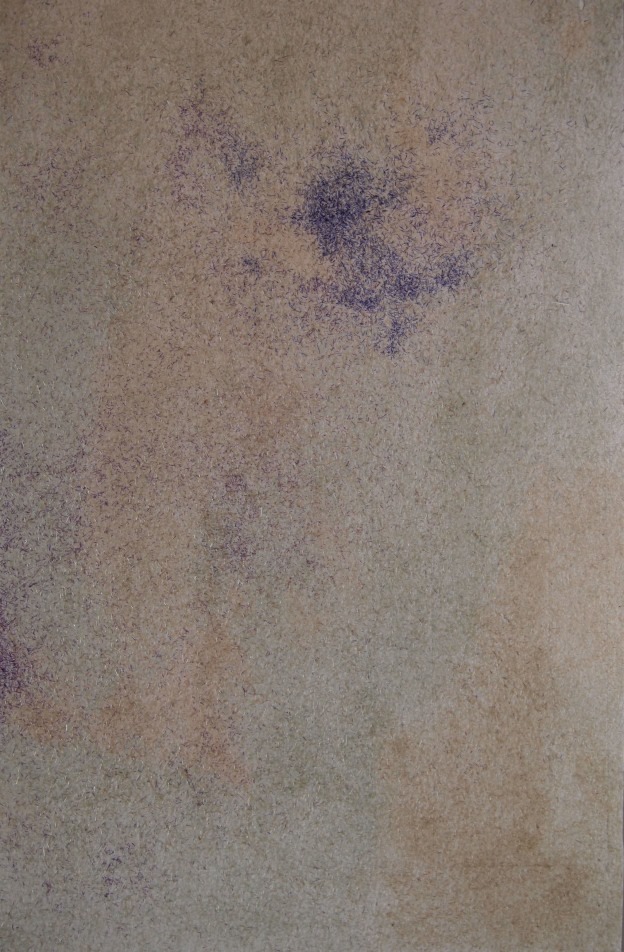
Dye 2
Hair on paper, sound, 32 x 21 cm, loop, 2015
Dye 3
Hair on paper, sound, 22 x 32 cm, loop, 2015
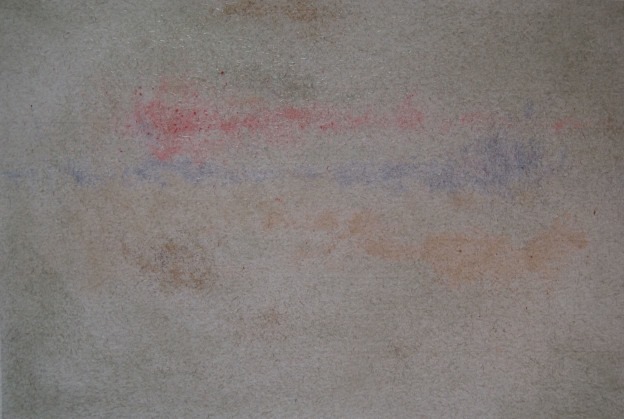
Dye
Hair on paper, sound, 22 x 32 cm, loop, 2015
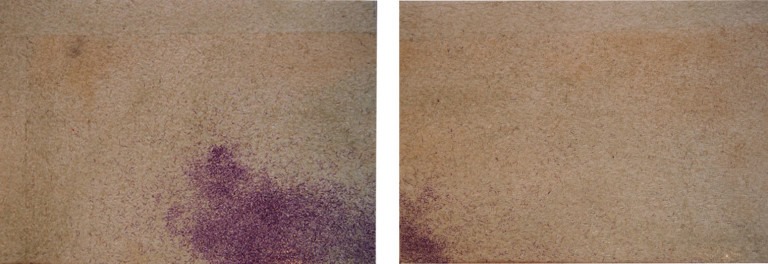
subversiv / 2013
Overlapping, Digital Video in real time, a CUHK journal in 1973, Sound,Colour, loop, 35×44 cm, time variable
The work is revised to discuss the relationship between my university and me. I studied Fine Arts in the Chinese University of Hong Kong of three years and graduated this year. My university, to which I have grown a strong sense of belonging, has a great impact on my life. I projected the activities of my room on the history book of my university in real time. The reason of choosing my room of the student apartment in university is that I reckon it as the most private place and I spent most of the time there. The book is a newsletter of the university published in the 1970s, when the university was just founded at that time. It is in handwritten form and it recorded every single details of the university at that time. For example, which staff member was having a vacation or which professor is sick. This kind of newsletter has not been published ever. I project the image of my room on the newsletter. It is also in real time in order to evoke and strengthen the sense of ‘reality’ as the matters happened in real time are out of our control in some ways. The newsletter represents the history of the university and next to it is the activity of a student’s room, which is happening ‘now’. The past and present, the great university and the little student form a strong contrast. The camera in my room is focusing the images under the table as to create a feeling of being peeped, or an invasion of privacy. The live video describes different the perspectives towards the school from a student and from the authority.
Fall / 2014
Stockings, Braille characters, E-mail from MTR corporation Ltd, Sound Size Variable, Loop
Fall is an artwork about my experience of falling into the gap between the train and the platform. I showed my tight that I wore when I was falling. On the wall is the Braille, which states about the information of the accident. Only people who know braille can know my secret. During the falling my sensation did not work and I feel like I was blind.
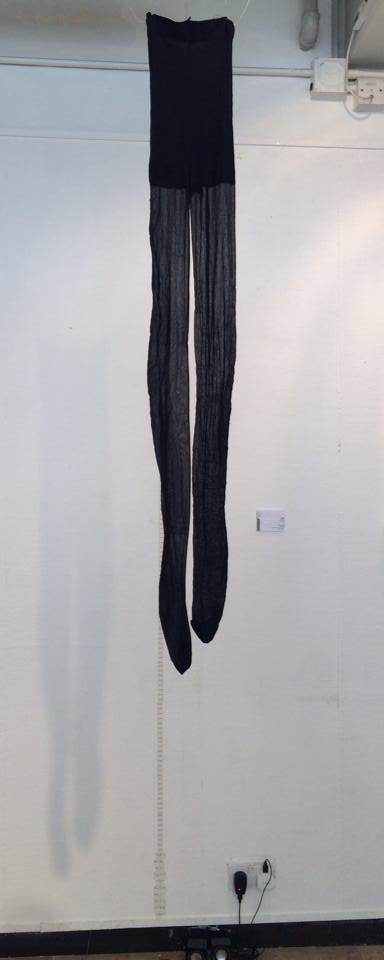
Vita
*1992 in Hong Kong
lhm@lawhoman.com / melodylawvivian@hotmail.com
www.lawhoman.com
Law Ho Man (b.1992) is an independent artist from Hong Kong. She is now working and living in Berlin. She received her Bachelor in Fine Arts (B.F.A.) at Chinese University of Hong Kong in 2014. Her works examine about identity, migration and culture by creating videos. Her works has been exhibited in various institutions in Hong Kong and Europe.
Education
Since 2016 Academy of Visual Arts Leipzig, Media Arts
2011-2014 Chinese University of Hong Kong(CUHK), Bachelor of Arts Fine Arts (degree)
Exhibitions
2019-2020 Palindromes/The Imaginary Border, Palazzo Ziino, Palermo, Italy
2019 The Yellow Raincoat Man, Listhus Artspace, Olafsfördur, Iceland
2018 An_archiv, HGB, Leipzig, Germany
2017 Turn On! A Moving Image Exhibition, a.m. space, Hong Kong
2017 Full Stop, Final show of Pilotenkueche International Artist Residency, Leipzig, Germany
2017 Diese Garderobe, Rundgang 2017, Academy of Fine Arts Leipzig, Leipzig, Germany
2015 Wire Arts Experiment, vol. 2, Berlin, Germany
2015 ‘Mobile Cinema @ City Visions Jena’, Faulloch am Johannistor, Jena, Germany
2015 ‘Hairly’ Law Ho Man Solo Exhibition, Ako Berlin, Germany
2014 ‘Vanishing Line’ I-care sponsored exhibition in Cheng Ming Building, CUHK
2014 ‘We Don’t Drink Water’, The Art of CUHK
2014 Graduation Exhibition in Art Museum, CUHK
2014 ‘/ˈpraktɪs/’ Lai Oi Ki and Law Ho Man Joint Exhibition, New Asia Ch’ien Mu Library
2013 ‘FFFF’ Joint Exhibition, Hui Gallery
2012 ‘dOCUMANTA(13.5)’ , The Exhibition of Art Tour in Germany, Hui Gallery
2012 ‘CUHK Fine Arts’, Annual Exhibition, CUHK
2011 ‘Happy Birstday’, The Year One Showcase , Joint Exhibition, CUHK
2010 ‘Cheerful Studio’s Students Joint Exhibition’, Tsuen Wan Town Hall
